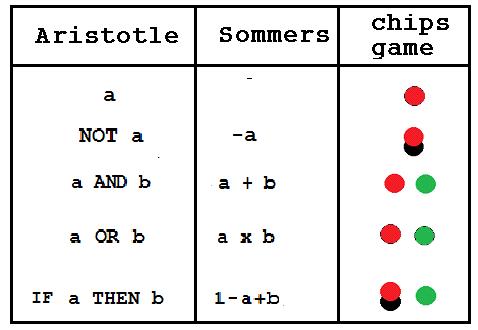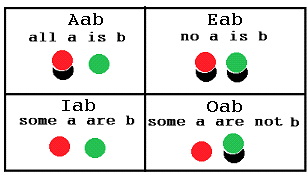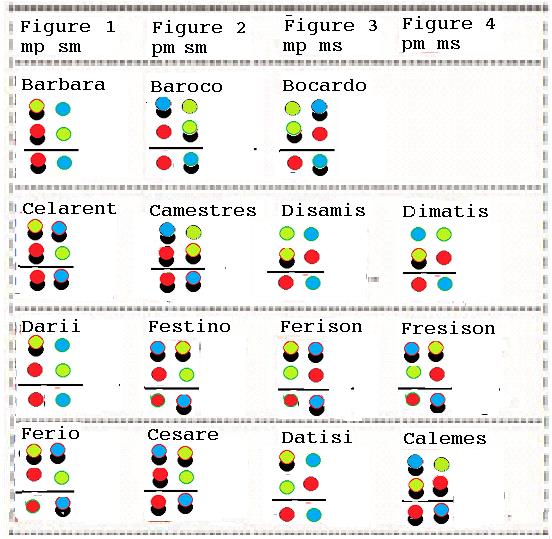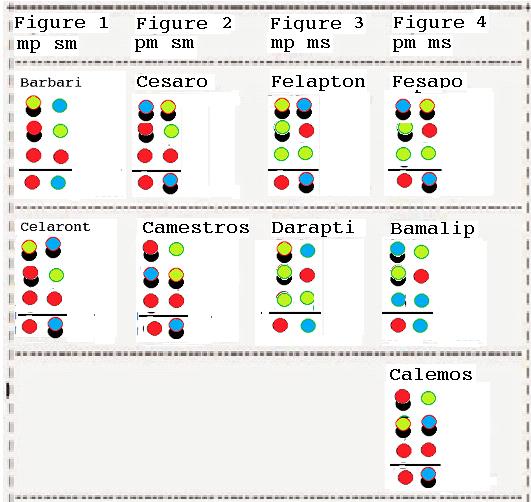Sommersian Chips Game of Logic
Armahedi Mahzar (c) 2015
In my previous blogs I presented a simulation of Boolean and Peircean
arithmologic with games of chips. In this blog I will show you how to
simulate Sommersian Arithmologic using the same chips. It will be shown
that the derivation of the conclusion from two premises in the valid
syllogisms is really the easiest. There are 24 valid syllogism as it is
shown in the following Leibniz table:
Representing Logical Expression with Chips
Aristotle using verbal string of words to represent logical expression such as
IF a THEN b. George Boole in 19th century used string of algebraic symbols to represent the mentioned logical expression as
1-a+b. In the 20th century, George Spencer-Brown used a containment of forms

to express the same logical expression as . Later, Lousis Kauffman in his Box Algebra represent the same logical expression as

.
. Finally, I replaced Kauffman letters with colored chips , to get
Object Logic algebra the representation of the logical expression IF a
THEN b is

.
Now, we can construct an arithmologic game that simulates Boolean arithmetic by representing TRUE or 1 by black chip

and variables by colored chips. Other representations for logical expressions is shown in the following table
The Categorical Proposition of Aristoteles
If a is represented by RED chip, b by a GREEN chip and 1 by a BLACK
chip, the the four fundamental categoric proposition of Aristotle can be
represented as it is shown in the following table.
Simulating the Syllogism Validity Proof
Reasoning by syllogism now can be simulated by three steps algorithm
1. Combined all the representation of premises with AND as the combinator.
2. Dispose all chip pairs

where the red chip is the symbol of any colored chip.
3. Read the rest as conclusion. If the rest is containing two color chips then the syllogism is valid. Otherwise it is invalid.
Proving Valid Syllogisms
To prove the Barbara syllogism, IF all m is p AND all s is m THEN all
s is p, we represent s, m and p with red, green and blue chips and
represent the conjunction of premises as the chips configuration above
the horizontal line in the picture below.
By discarding opposite pairs of chips, we will get the chips
configuration below the line which can be read as the conclusion of the
syllogism.
The proof the validity of all 15 syllogisms can be derived with the help of the following table.
Beside the 15 valid syllogisms without any assumption of the existence
of a certain term, there are 9 valid moods of syllogism containing
existential assumption.
For example, the validity of Barbari syllogism which is containing
one assumption of the existence of the subject term can be proven like
this, where the the third proposition is Iss is represented by the
following picture.
In the proof, we just eliminate the oppositional pair of chips above
the horizontal line to get the chip configuration below the line.
The proof the validity of all 9 existential syllogisms can be shown in the following table.
Afternotes
The chips game can be used to prove hypothetical and disjunctive of
the Stoic logician. In fact it can be used to prove any Boolean
tautology. So it is shown that a game of concrete object can also simulate
any logical proof in abstract algebraic symbols.
The objects chosen in this blog are colored chips. However the
colored chips can be replaced with any objects and the black chips can
be replaced with any sheets of paper. For example, the colored chips are
replaced with colored marbles and the black chips are replaced with
closed cards.
In this blog, logic is formulated with Sommersian algebraic symbols.
The Boolean algebraic, Peircean pictorial and Sommersian literal
formulations can also be simulated with similar game of concrete things. Among the three games, the Sommersian is the simplest.
All the logic games of concrete things are so easy to play that it
can be taught to any kindergarten kid. Surely, we just teach them the
rules of formation and transformation of the things arrangement without
the logical interpretation.
Once they are skilled in the logic game playing, the algorithm will be
deeply entrenched in their subconscious so it will facilitate their
logical skill in later ages. Hopefully, the games can also enhanced
their IQ like the WFF’n PROOF game created by professor Layman E. Allen
in the Yale University.
 and predicate b represented by green marble
and predicate b represented by green marble  , then NOT a is represented by red marble placed upon small white paper
, then NOT a is represented by red marble placed upon small white paper  .
.
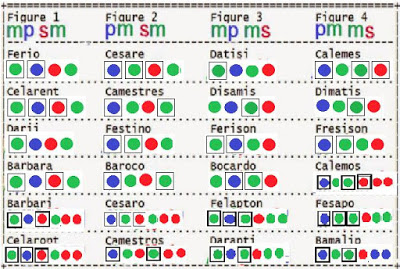











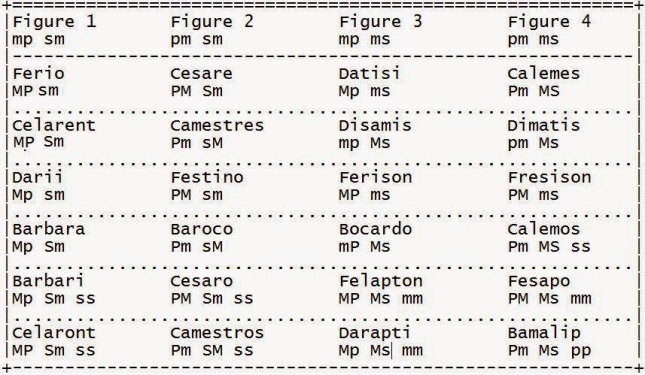



















 of the Yale university who created the WFF’N PROOF: a game of logic based on Polish notation.
of the Yale university who created the WFF’N PROOF: a game of logic based on Polish notation.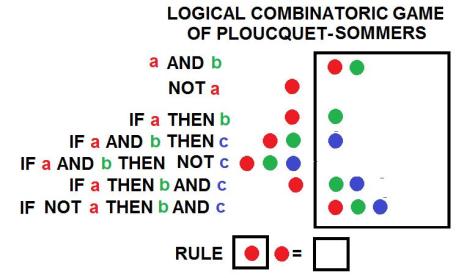


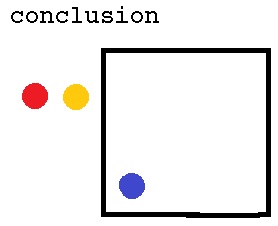





 to express the same logical expression as . Later, Lousis Kauffman in his Box Algebra represent the same logical expression as
to express the same logical expression as . Later, Lousis Kauffman in his Box Algebra represent the same logical expression as .
. Finally, I replaced Kauffman letters with colored chips , to get
Object Logic algebra the representation of the logical expression IF a
THEN b is
.
. Finally, I replaced Kauffman letters with colored chips , to get
Object Logic algebra the representation of the logical expression IF a
THEN b is
 .
. 